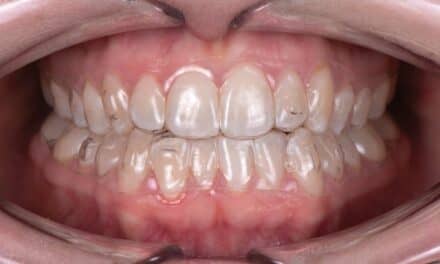Map out your aligner treatment plan and ensure efficient and cost-effective treatment
By Vincent Hansen, DMD, MSD
Aligner treatment is an integral and necessary part to the viability of an orthodontic practice. When time is taken to carefully map out aligner treatment, it can be an efficient and cost-effective treatment modality for any orthodontic practice. Since becoming a partner in my private practice 6 years ago, my practice partner Jeffery Biggs, DDS, MS, and I have dedicated a lot of time and energy to develop our aligner treatment methods and a digital workflow to best manage a variety of orthodontic cases. Below are a few aligner setup pearls we’ve learned along the way.
1. Use an aligner system that is comfortable to you
Since Invisalign’s patents ran out, we have been hit with a barrage of different aligner companies offering their systems. Some perform the setups for you, allowing you to type in recommended revisions to the plan. Others offer a system that allows you to manipulate the setup yourself. Ultimately, it is important that you pick a system that helps you achieve your treatment goals effectively.
2. Consider a cost-effective aligner system
For complicated cases, it makes sense to send these cases out to an aligner company that offers unlimited aligners for a single case fee.
For simpler cases, requiring minor alignment correction, in-house aligners can be very cost-effective and provide a good result. There are various software choices that can be used in conjunction with your 3D printer to create such setups. For example, ULAB and Suresmile each offer software for fabricating in-office aligners.
3. Be critical of turnaround time
Some companies are better than others when creating revisions and modifications to your plan. The benefit of in-house systems is that when a modification is made to your plan, it is done in real-time, as opposed to having to wait for a technician to modify the setup. This can stretch out the time from consultation to aligner delivery.
4. Remember your biomechanics
Braces and aligners are just different methods to achieve goals—the basic mechanics of tooth movement still apply. For example, if I want to correct a deep overbite, I need to level the Curve of Spee. With braces this can be done in various ways, stepping down lower incisors, adding reverse curve to archwires, intrusion arches etc. All methods aim to intrude incisors and extrude premolars and, sometimes, first molars to level the curve.
Attachments should be placed strategically within aligners to achieve a similar goal. Intrusive and extrusive movements are difficult movements with aligner treatment. Utilizing attachments with a significant undercut on the bicupsids—perhaps even the first molar—will allow the aligner to lock into position and apply an extrusive force on the bicuspids while placing an intrusive force across the anterior teeth and first or second molars depending on attachment placement.
5. Overcorrection is important with aligners
Whether there is a significant rotation of a tooth or deep overbite, build in overcorrection. This is especially critical when leveling the Curve of Spee to correct a deep bite. Your ability to achieve Class II correction with elastics or closure of interdental spacing requires overbite correction; aligners will typically under-deliver with overbite correction.
6. Attachments are critical to achieve certain tooth movements
Attachments are important for leveling the Curve of Spee. However, they are also necessary to achieve single tooth extrusion or intrusion, or helping with a significant rotation. With a significantly rotated bicuspid it is difficult for aligners to achieve a significant enough grip on a tooth to complete the rotation. A vertical attachment with a significant ledge towards the rotation will help drive the rotated tooth. Also consider placing an attachment on the lingual surface of the tooth to create a couple. When considering intruding a single tooth with a significant vertical discrepancy, incisally beveled attachments can be place on adjacent teeth. This will allow the aligner to “lock” into the undercuts created by the attachments and put more direct intrusive force on the tooth in the middle.
7. Request a blank slate
There are times where the setup provided by the aligner technician does not achieve the goals you set out to accomplish and it is difficult to relay exactly what you are trying to achieve. In these situations, I will typically request a blank setup to control the tooth movement myself.
8. Use auxiliary mechanics
Sometimes it is necessary to vary the plan to help achieve treatment goals. Built-in bite turbos to aid in overbite correction are often useful to overcome the posterior intrusion that is inherent to aligner treatment that is counter-productive in cases with deep overbites.
9. Have realistic expectations
Virtual setups can accomplish “any” result. It is your job to be critical of the treatment projections and explain to your patient potential limitations. If you have a good understanding of bio-mechanics, and plan your case out, you will achieve a realistic result.
10. Under-promise on timeline and over deliver
It’s important, especially when dealing with adult patients, to present an accurate treatment timeline; and they should understand that the initial number of trays may not be the total treatment time. Build into your total treatment time estimate, time for a refinement and the turnaround time it takes the company to get the refinement back to you. Often I will tell these patients to focus on the months of active treatment, not the number of actual aligners, because sometimes “fine-tuning” is needed at the end. Often, the refinement is not necessary and the patient is ecstatic that they’re done early. OP
Vince Hansen, DMD, MSD, graduated from Temple University Kornberg School of Dentistry in 2010 and Indiana University in 2012 with a MSD and certificate in Orthodontics and Craniofacial Development. His areas of interest include digital workflow development and digital technology implementation for use in an orthodontic practice. He joined Jeffery Biggs, DDS, MS, in practice in 2014 and Biggs-Hansen Orthodontics was formed. Hansen, along with Biggs, are co-founders of the Orthodontic Details Marketplace.










